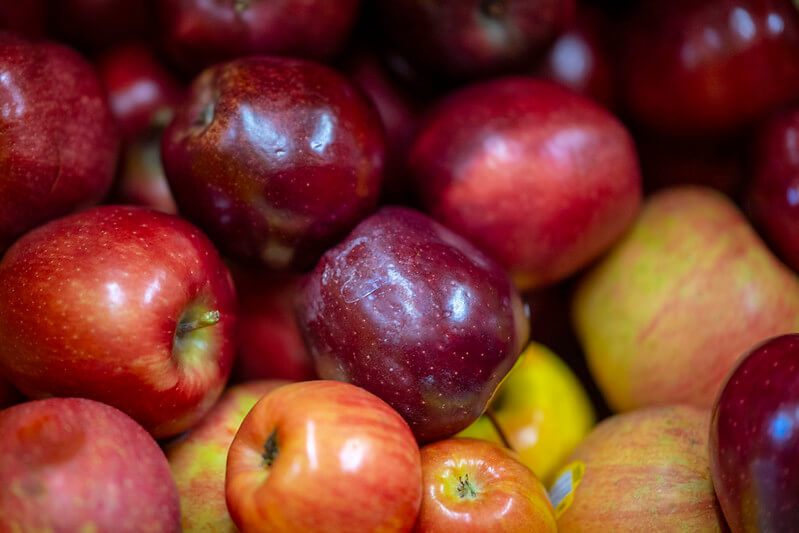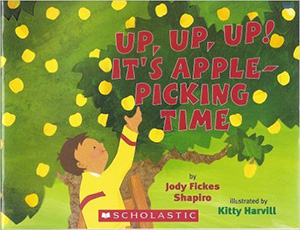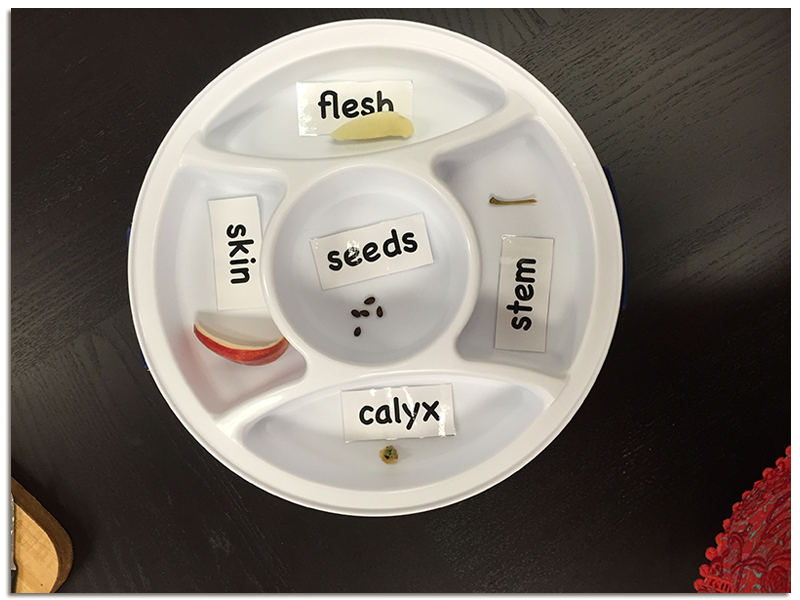A is for Apples
Students use their five senses to investigate apples, identify and model the parts of an apple, make applesauce, and discover how apples are grown.

Background
Lesson Activities
Recommended Companion Resources
Credits
Author
Lynn Wallin | Utah Agriculture in the Classroom
Sources
- http://www.usapple.org/index.php?option=com_content&view=article&id=179&Itemid=285
- http://www.nyapplecountry.com/about/fun-facts
Standards
Indiana Content Area Standards
-
English Language Arts.Kindergarten.RL.1
Actively engage in group reading activities with purpose and understanding.
- Key Ideas and Textual Support.K.RL.2.4: Make predictions about what will happen in a story.
-
English Language Arts.Kindergarten.RV.1
Use words, phrases, and strategies acquired through conversations, reading and being read to, and responding to literature and nonfiction texts to build and apply vocabulary.
- Vocabulary Building.K.RV.2.2: Identify and sort pictures of objects into categories (e.g., colors, shapes, opposites).
- Vocabulary in Literature and Nonfiction Texts.K.RV.3.1: With support, ask and answer questions about unknown words in stories, poems, or songs.
-
English Language Arts.Kindergarten.W.1
Write for specific purposes and audiences.
- Conventions of Standard English.K.W.6.2: Demonstrate command of capitalization, punctuation, and spelling, focusing on: K.W.6.2a Capitalization Capitalizing the first word in a sentence and the pronoun I. K.W.6.2b Punctuation Recognizing and naming end punctuation. K.W.6.2c Spelling Spelling simple words phonetically, drawing on phonemic awareness.
- Writing Genres.K.W.3.2: Use words and pictures to develop a main idea and provide some information about a topic.
-
English Language Arts.Kindergarten.SL.1
Listen actively and communicate effectively with a variety of audiences and for different purposes.
- Comprehension.K.SL.3.1: Ask and answer questions about key details in a text read aloud or information presented orally or through other media.
- Discussion and Collaboration.K.SL.2.1: Participate in collaborative conversations about grade-appropriate topics and texts with peers and adults in small and larger groups.
- Discussion and Collaboration.K.SL.2.3: Listen to others, take turns speaking, and add ones own ideas to small group discussions or tasks.
- Presentation of Knowledge and Ideas.K.SL.4.3: Give, restate, and follow simple two-step directions.
-
Physical Education: Standard 3
The physically literate individual demonstrates the knowledge and skills to achieve and maintain a health-enhancing level of physical activity and fitness.
- K.3.6.B Physical Education: Identifies healthy and unhealthy foods.
 Read the book Up, Up, Up! It's Apple-Picking Time by Jody Fickes Shapiro. As you read, discuss the following questions with the students:
Read the book Up, Up, Up! It's Apple-Picking Time by Jody Fickes Shapiro. As you read, discuss the following questions with the students:

 Each student will choose adjectives from their 5 Senses Chart to create a poem about apples. For each sense, they will write a sentence about the apples they were able to see, smell, feel, hear, and taste. Using the “Apple Book” template, cut a front and back cover and five pages. Write each sentence on one page of the book. Secure the book using a hole punch and ribbon.
Each student will choose adjectives from their 5 Senses Chart to create a poem about apples. For each sense, they will write a sentence about the apples they were able to see, smell, feel, hear, and taste. Using the “Apple Book” template, cut a front and back cover and five pages. Write each sentence on one page of the book. Secure the book using a hole punch and ribbon. nutrients to the apple. Place the stem by the “stem” card.
nutrients to the apple. Place the stem by the “stem” card.